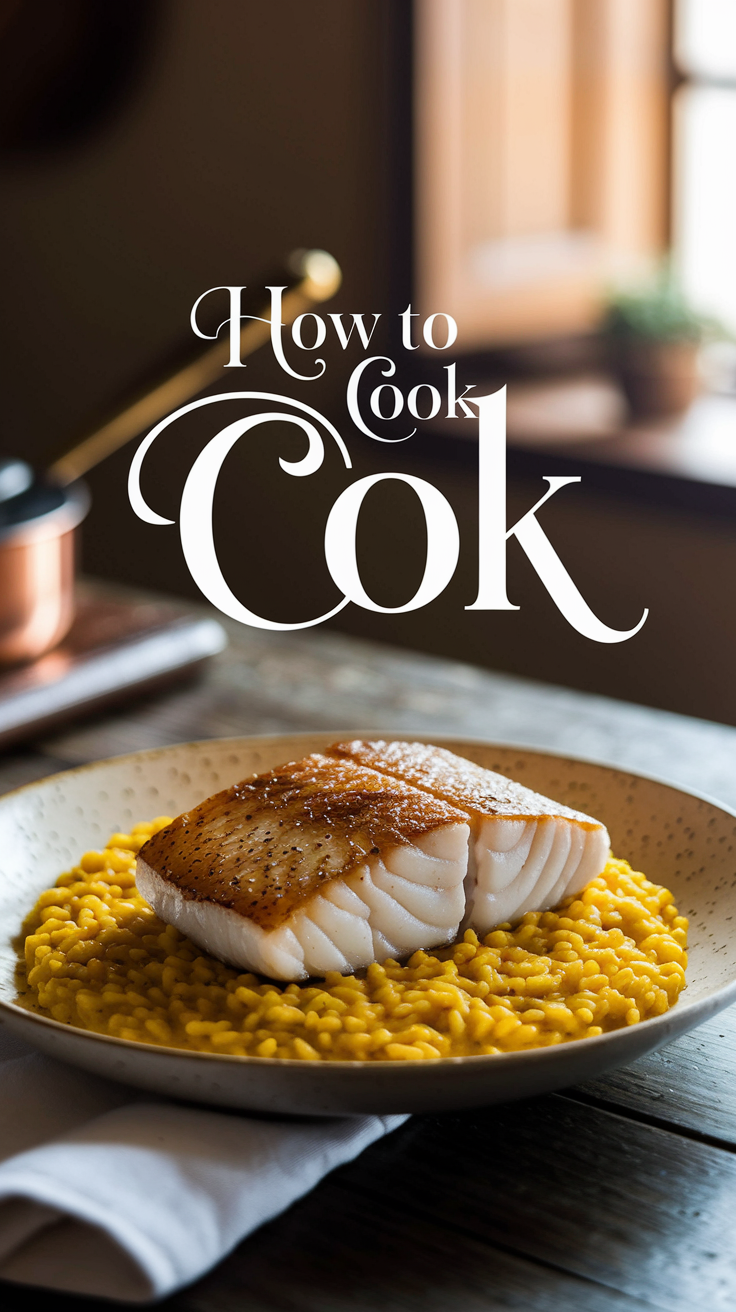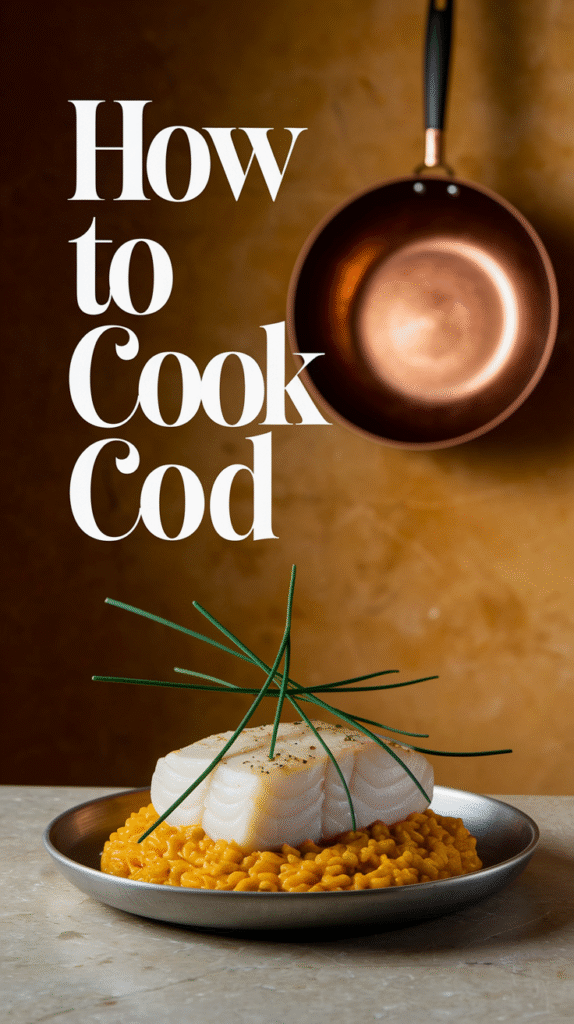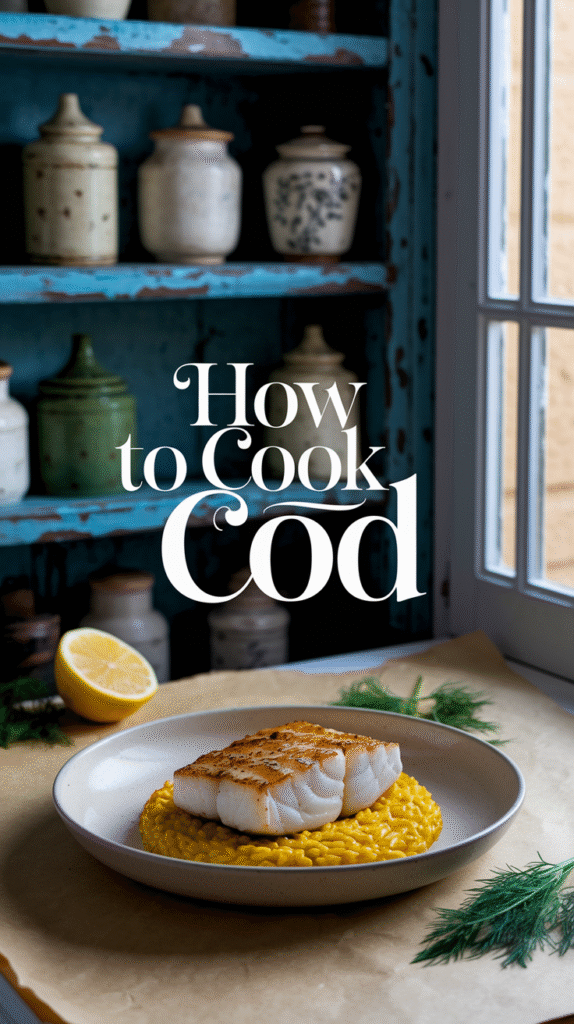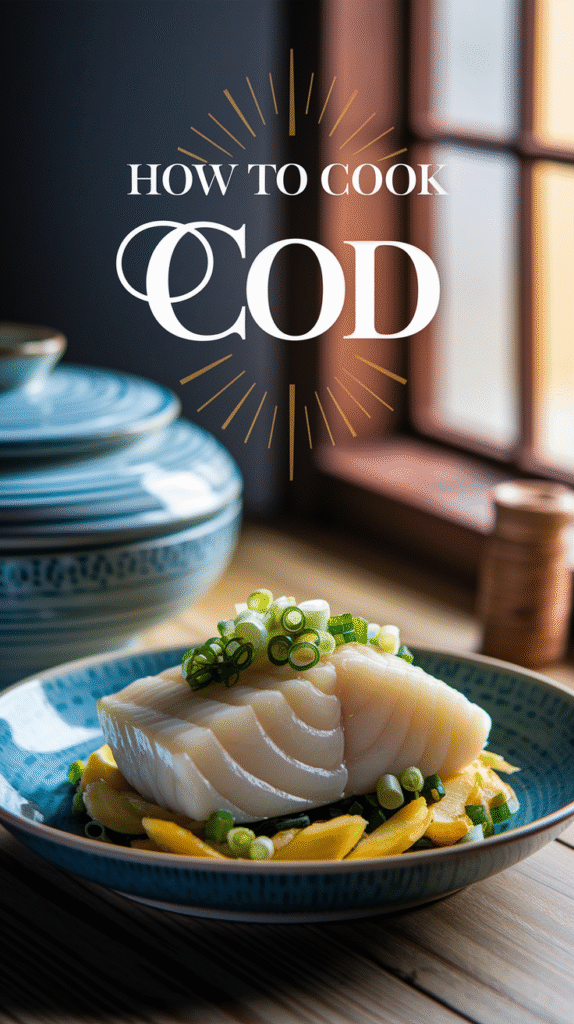Cooking cod can be a delightful experience, as this fish is not only delicious but also versatile. Whether you’re preparing it for a fancy dinner or a quick weeknight meal, knowing how to cook cod properly can lead to wonderfully flaky results. Here are some techniques and tips to ensure that your cod turns out perfectly every time.
Choosing the Right Cod
When selecting cod, look for fresh, firm fillets with a mild ocean scent. Avoid pieces with a strong fishy odor as this indicates that they may not be fresh. Depending on your preference, you can choose from:
- Atlantic Cod: Known for its mild flavor and flaky texture.
- Pacific Cod: Slightly sweeter with a firmer texture.
- Black Cod: Rich and buttery, it is great for grilling and broiling.
Preparing Cod for Cooking
Before cooking, it’s essential to prep your cod. Rinse the fillets under cold water and pat them dry with paper towels. Drying the fish helps it develop a nice sear and prevents steaming. You can season it simply with salt and pepper or use a marinade for added flavor. A simple marinade can include:
- Olive oil
- Lemon juice
- Garlic
- Herbs like parsley or dill
Techniques for Cooking Cod
There are several great methods to cook cod, each yielding delicious results:
1. Baking
Baking cod is a healthy and easy approach. Preheat your oven to 400°F (200°C), line a baking sheet with parchment paper, and place the cod fillets on it. Brush with olive oil and season with salt, pepper, and any herbs you enjoy. Bake for 12-15 minutes or until the fish flakes easily with a fork. A tip is to add a slice of lemon on top for an extra burst of flavor.
2. Pan-Searing
Pan-searing creates a crispy exterior while keeping the fish moist inside. Heat some oil in a non-stick skillet over medium-high heat. Once hot, add the seasoned cod fillets. Cook for about 4-5 minutes on each side, depending on the thickness. Look for a golden crust to form. This method pairs well with a light sauce made from butter and lemon juice.
3. Grilling
If you enjoy outdoor cooking, grilling cod is a fantastic option. For this, it’s best to use a grill basket to prevent the fish from falling apart. Preheat your grill to medium-high heat, brush the fillets with oil, and season them. Grill for about 4-6 minutes on each side, depending on thickness. Delicious BBQ flavor will enhance the cod.
Tip: Skewering chunks of cod with vegetables like peppers and onions can create a lovely kebab effect.
4. Steaming
Steaming is perfect for those looking for a healthier option. You can use a steamer basket over simmering water or a microwave-safe dish covered with a lid. Steam for about 6-8 minutes, or until the fish is opaque and flakes easily. Enhance flavor by adding sliced ginger or herbs to the water.
5. Poaching
Poaching cod in broth or wine adds moistness and flavor. In a saucepan, bring seasoned broth or white wine to a gentle simmer. Carefully place the cod in the liquid and cook for 10-12 minutes. Poached cod pairs wonderfully with a fresh salad or lightly sautéed vegetables.
Serving Suggestions
Serve your perfectly cooked cod with a side of:
- Steamed vegetables
- Rice or quinoa
- A crisp salad
Don’t forget to drizzle with a sauce like tartar or a lemon-butter sauce for extra flavor.
Storing Leftover Cod
If you have leftovers, store them in an airtight container in the refrigerator for up to 2 days. Reheat gently in the oven or on the stovetop to maintain moisture. Avoid microwaving for best texture.
Now that you know how to cook cod using these various techniques, you can explore each method and find your favorite way to enjoy this remarkable fish. For more delicious cod recipes and culinary tips, visit Simply Recipes.
The Nutritional Benefits of Cod: Why You Should Add It to Your Diet
Cod is not only a delicious fish but also a powerhouse of nutrition. Adding cod to your diet can provide your body with essential nutrients that contribute to overall health and well-being. Let’s delve into the nutritional benefits of this versatile fish and explore why you should consider including it in your meals.
Rich in Protein
Cod is an excellent source of high-quality protein. A typical serving of cod (about 3 ounces) contains around 20 grams of protein. Protein is crucial for muscle repair, immune function, and the production of enzymes and hormones. Consuming sufficient protein can help keep you feeling full and satisfied, which can benefit weight management.
Low in Calories and Fat
One of the significant advantages of cod is its low-calorie and low-fat content. A 3-ounce portion of cooked cod has approximately 70-90 calories and less than 1 gram of fat. This makes cod an ideal option for those looking to maintain a healthy weight while still enjoying flavorful meals. cod into your diet can be a great way to indulge without the guilt of consuming excessive calories or unhealthy fats.
Omega-3 Fatty Acids
Cod is a source of omega-3 fatty acids, known for their heart health benefits. Omega-3s have been shown to reduce inflammation, lower blood pressure, and decrease the risk of heart disease. While cod is not as high in omega-3s as fatty fish like salmon, it still contributes to your daily intake. For heart health, aim for at least two servings of fish per week, and consider including cod as part of that plan.
Rich in Vitamins and Minerals
Cod is packed with essential vitamins and minerals that support various bodily functions.
- Vitamin B12: Important for energy production and maintaining healthy nerve cells.
- Vitamin D: Helps in calcium absorption, which is vital for strong bones.
- Selenium: Acts as a powerful antioxidant that helps protect cells from damage.
- Phosphorus: Supports healthy bones and teeth, and plays a vital role in energy production.
- Potassium: Essential for heart health and blood pressure regulation.
Health Benefits
Cod into your diet can lead to several health benefits:
- Weight Management: Being low in calories and fat, cod makes a satisfying addition to weight loss diets.
- Heart Health: The presence of omega-3 fatty acids and low saturated fat content can promote cardiovascular health.
- Muscle Health: The protein content helps support muscle maintenance and growth, especially when paired with regular exercise.
- Bone Health: With its vitamin D and phosphorus content, cod can support bone density and strength.
How to Cook Cod
Cooking cod can be simple and rewarding. Whether baking, grilling, or pan-searing, this fish adapts well to many flavors. Here are some easy methods to cook cod:
- Baked: Coat cod fillets in olive oil, lemon juice, and herbs. Bake at 400°F for 15-20 minutes.
- Grilled: Marinate cod in your favorite sauce and grill for a smoky flavor.
- Pan-Seared: Sear cod in a skillet for a crispy skin and flaky interior.
For detailed recipes, you can visit Eat Well 101.
Final Thoughts
Adding cod to your diet can provide numerous nutritional benefits, from high-quality protein to essential vitamins and minerals. This fish’s mild flavor and versatility in cooking make it a perfect choice for meals at any time of the year. For more information on the nutritional content of cod, check out Healthline.
Healthy eating can be enjoyable, and incorporating cod into your meals is a great step toward better nutrition. Try different recipes and cooking methods to find what you love most about this nutritious fish!
Different Cooking Methods for Cod: Boiling, Baking, and Grilling
Cod is a popular fish known for its mild flavor and flaky texture. It’s versatile and can be prepared in various ways, allowing cooks to explore different tastes and methods. In this article, we will look at three main cooking techniques for cod: boiling, baking, and grilling. Each method has its own unique benefits and can help bring out the delightful flavors of this fish.
Boiling Cod
Boiling cod is one of the simplest cooking methods. It’s quick, and the result is moist fish that retains its delicate flavor.
- Quick Cooking: Boiling ensures that the fish cooks evenly in just a few minutes.
- Flavor Absorption: When boiled, cod can absorb the flavors of broth or seasonings added to the water.
To boil cod, follow these easy steps:
- Start by preparing a pot of water. You can enhance the flavor by adding salt, herbs, or even a splash of lemon juice.
- Bring the water to a rolling boil.
- Gently add the cod fillets into the boiling water.
- Boil for about 5-10 minutes, ensuring to check for doneness. The fish should be opaque and flake easily with a fork.
- Remove the cod from the pot and allow it to rest for a minute before serving.
Baking Cod
Baking is another excellent way to prepare cod. This method allows for a hands-off approach while also enabling the fish to take on additional flavors from added ingredients.
- Healthier Option: Baking requires little or no oil, making it a healthier choice compared to frying.
- Flavor Variability: You can easily customize baked cod with various toppings like herbs, spices, or sauces.
Here’s how to bake cod:
- Preheat your oven to 400°F (200°C).
- Line a baking dish with parchment paper or lightly grease it.
- Place the cod fillets in the dish and add your seasoning of choice—think lemon, garlic, or Italian herbs.
- Bake for about 12-15 minutes, depending on the thickness of the filets. The fish should easily flake apart when done.
- Let it rest a few minutes before serving.
Grilling Cod
Grilling cod adds a smoky flavor that enhances the overall taste. This method is ideal for summer barbecues or for those who love to cook outdoors.
- Simpler Cleanup: When grilling, you can avoid dirtying too many dishes.
- Great Texture: Grilling creates a beautiful crust on the fish while keeping the inside moist.
To grill cod successfully, follow these steps:
- Preheat the grill to medium-high heat.
- Brush the cod with a bit of oil to prevent sticking.
- Season the fish with salt, pepper, and any other desired spices.
- Place the cod on the grill and cook for about 5-6 minutes on each side.
- Check for doneness; the fish should easily flake and have nice grill marks.
Regardless of the method you choose—boiling, baking, or grilling—cod remains a delicious and nutritious option. Its subtle flavor can be complemented by various seasonings and side dishes, allowing for a unique dining experience each time. Make sure to experiment with your favorite marinades and herbs to find the perfect combination for your palate.
If you’re looking for more cooking ideas and recipes, check out Allrecipes or Food Network. These sites offer a wealth of information to help you master the art of cooking cod and other delicious seafood dishes.
Flavor Pairings for Cod: Best Herbs, Spices, and Sides
When it comes to cooking cod, the flavor pairings you choose can elevate this tasty fish to new heights. Cod has a mild, slightly sweet flavor that pairs beautifully with a variety of herbs, spices, and side dishes. By understanding these flavor combinations, you can create a meal that excites the taste buds and makes cod a staple in your kitchen.
Herbs that Compliment Cod
Herbs are an essential part of flavoring cod, and certain varieties shine particularly bright:
- Dill: This herb adds a fresh, slightly anise-like flavor, perfect for light dishes with cod.
- Parsley: Chopped parsley adds brightness and a touch of earthiness, enhancing the dish without overpowering it.
- Thyme: Thyme’s woody aroma complements the richness of cod, creating a delightful culinary balance.
- Chives: With a mild onion flavor, chives add a pleasant kick when sprinkled over cooked cod.
- Oregano: This herb’s robust flavor works well with baked or grilled cod, giving it a Mediterranean touch.
Spices to Enhance the Flavor of Cod
Adding spices can transform your cod dish from ordinary to extraordinary. Here are some spices that pair well:
- Paprika: Both sweet and smoked paprika can bring depth and a subtle smokiness to your cod.
- Cumin: Cumin introduces a warm, earthy flavor, perfect if you’re aiming for a more textured dish.
- Black Pepper: Freshly cracked black pepper is a classic seasoning that enhances cod’s natural flavors.
- Red Pepper Flakes: Ideal for those who enjoy a bit of heat, red pepper flakes add a spicy kick to any cod dish.
- Garlic Powder: This spice adds a savory flavor that pairs well with almost any preparation of cod.
Side Dishes that Pair with Cod
The right side dishes can complement the mild taste of cod, making your meal complete. Here are options to consider:
| Side Dish | Flavor Profile |
|---|---|
| Steamed Vegetables | Light and fresh, enhances the delicate flavor of cod. |
| Roasted Potatoes | Crispy and savory, offering a satisfying contrast to cod. |
| Couscous Salad | Nutty and fluffy, provides a great texture and taste balance. |
| Rice Pilaf | Lightly seasoned and fluffy, complements the fish without overbearing. |
| Garden Salad | Fresh and crisp flavors that keep the meal light. |
For a refreshing touch, consider incorporating citrus elements like lemon or orange zest into your sides. They enhance the flavors of your cod dish beautifully.
Cooking Techniques to Enhance Flavors
The method you choose to cook cod can significantly influence its flavor profile. Here are some techniques that work well:
- Grilling: Adds a smoky flavor while keeping the fish flaky and tender.
- Baking: A great way to infuse herbs and spices, especially under a layer of breadcrumbs.
- Poaching: Keeps it moist and requires minimal seasoning, allowing the fish’s natural flavor to shine.
- Sautéing: Quick and easy, perfect for a weeknight meal while adding herbs and spices at the end for maximum flavor.
As you plan your next cod dish, think about these flavor pairings to bring out its best qualities. The possibilities are endless, whether you’re a fan of a zesty lemon herb cod or a spicy paprika version. Remember, experimenting with herbs, spices, and sides is part of the fun. For more tips on cooking cod, visit FishWatch for sustainable seafood options and Seafood Nutrition for healthy recipes and cooking tips.
Common Mistakes to Avoid When Cooking Cod: Ensuring Tenderness and Flavor
Cooking cod can be a delightful experience, but there are common mistakes that many people make that can lead to disappointing results. The goal is to ensure that your cod is tender and full of flavor. Here are some essential tips to avoid pitfalls when cooking this delicious fish.
Choosing the Right Cod
The first step is selecting good quality cod. Freshness is crucial; aim for cod that has a mild scent and clear, bright eyes if you’re buying whole fish. When buying fillets, ensure the flesh is firm, moist, and slightly translucent. Frozen cod can be a convenient option, but be sure it’s properly thawed before cooking.
Overcooking the Cod
One of the most common mistakes is overcooking the cod. Cod is a lean fish, making it easy to dry out. Here are tips to avoid this mistake:
- Use a precise cooking method: Baking, poaching, or steaming are gentle methods that help retain moisture.
- Check the internal temperature: Cod should be cooked to an internal temperature of 145°F (63°C). Use a food thermometer for accuracy.
- Observe the color: The fish should be opaque and flake easily with a fork when properly cooked.
Neglecting Seasoning
Another error is skimping on seasoning. Cod has a mild flavor that benefits from added herbs and spices. To enhance the taste, try:
- Using citrus: A squeeze of lemon or lime complements the fish beautifully.
- Fresh herbs: Dill, parsley, or thyme can elevate the dish and add depth.
- Marinades: A simple marinade with olive oil, garlic, and herbs can infuse flavor before cooking.
Ignoring Cooking Times
Cooking cod for too long can result in a rubbery texture. Different cooking methods have varying times. Here’s a quick guide for common methods:
| Cooking Method | Cooking Time |
|---|---|
| Baking | 12-15 minutes at 400°F (204°C) |
| Grilling | 6-8 minutes per side |
| Poaching | 10-15 minutes |
Follow these guidelines to avoid the trap of cooking for too long. Always check early to ensure the cod remains tender.
Not Using a Proper Cooking Surface
The choice of cooking surface can impact the final result. Using a non-stick pan or a well-seasoned cast iron skillet can prevent sticking and promote even cooking. Additionally:
- Preheat your pan: Ensure your cooking surface is hot before adding the fish to achieve a nice sear.
- Avoid overcrowding: Cooking too much cod at once can cause steaming instead of searing. Work in batches if necessary.
Failing to Rest the Fish
After cooking, it’s essential to let the cod rest for a few minutes before serving. Resting allows the juices to redistribute, resulting in a more flavorful piece of fish. Cover it loosely with foil for about 5 minutes to keep it warm.
Not Serving with Accompaniments
Cod pairs wonderfully with various sides, enhancing your meal. Consider these options:
- Vegetables: Roasted asparagus, sautéed spinach, or a fresh salad.
- Starches: Serve with rice, quinoa, or mashed potatoes.
- Sauces: A light tartar sauce or a citrus beurre blanc can complement the fish beautifully.
By being mindful of these common mistakes, you can ensure your cod dishes turn out tender and bursting with flavor every time. Visit Seafood Source for more tips on sourcing and preparing seafood, and check out Riverside Gourmet for delicious cod recipes to try at home!
Conclusion
Cooking cod can be a delicious and fulfilling endeavor, especially when you understand the various techniques and tips essential for achieving perfectly flaky fish. By incorporating cod into your diet, you not only enjoy a tasty meal but also reap numerous nutritional benefits, such as high protein content and beneficial omega-3 fatty acids.
Exploring different cooking methods like boiling, baking, and grilling opens up a world of culinary possibilities. Each method offers unique flavors and textures, allowing you to find the perfect fit for your taste buds. Whether you prefer the simplicity of boiling or the enticing crispiness of grilled cod, there’s a method for everyone.
Flavor pairings play a significant role in enhancing the taste of cod. Consider using a mix of fresh herbs, zesty spices, and complementary sides to create a well-rounded meal. Ingredients like lemon, garlic, and parsley can elevate the flavors, making your dish truly memorable.
Avoiding common mistakes is also crucial for ensuring your cod is both tender and packed with flavor. Keeping an eye on cooking times and not over-seasoning are simple yet effective ways to enhance your dish’s appeal.
By mastering these techniques and tips, you can enjoy a delightful dining experience featuring cod on your table. Embrace the delicious versatility of this fish and experiment with different methods and flavors—your palate will thank you!







Leave a Reply